This spring, the Yampa Valley Community Foundation (YVCF) conducted a comprehensive survey to better understand the funding landscape and operational challenges facing local nonprofits. The results gathered from 46 nonprofit organizations serving Routt and Moffat counties highlight the role of federal and state funding in our community.
The survey captured responses from a range of organizations, including 27 that serve Routt County exclusively, three that serve Moffat County, and 15 that operate across both. Budgets ranged widely, from as small as $11,000 all the way up to $21 million annually, illustrating the breadth and diversity of nonprofits in the region.
Federal Funding in the Yampa Valley
According to the survey, federal funding plays a significant role in supporting local nonprofits. Twelve respondents receive direct federal grants or contracts, while 22 receive indirect funding through either state or local agencies. For most, these funds support program work, though 12 organizations do receive some general operating support from federal dollars.
This year the reliance on federal funding has led to uncertainty for nonprofits in the valley. At the time of the survey, 10 organizations had already experienced disruptions to their federal funding. The hardest hit sectors included Agriculture & Environment (4), Human Services (3), and Youth Development (2). One-third of survey respondents said they would have to reduce services if federal funding was lost, and 10% said they would be forced to discontinue their federally funded operations entirely.
Funding Breakdown and Sector Disparities
Federal and state funds account for 45% of responding nonprofits’ budgets, with the remaining 55% coming from local support, private donations, membership fees, and earned income. However, this split varies significantly by sector. Health Care, Mental Health, Crisis Response, and Youth Development organizations are particularly dependent on federal funding. Where as, Agriculture & Environment and Human Services nonprofits report a greater share of state funding, although this includes federally sourced dollars passed through state agencies.
Financial and Capacity Concerns Across Organizations
The uncertainty around federal funding is driving many organizations to rethink their development strategies. The majority of respondents said they plan to increase and diversify their fundraising efforts in the coming year. We heard from both nonprofits that currently receive federal funding and those that do not that there is concern about increased competition for limited local and private resources as federal dollars diminish or refocus on new priorities.
Beyond financial concerns, many nonprofits also reported growing capacity challenges. Many organizations report increased demand for services, especially in areas like human services, youth development, and environmental programs. Others pointed to gaps created by reductions in federal staffing and services, which are forcing nonprofits to take on new roles to meet community needs.
Looking Ahead
A key development is the One, Big Beautiful Bill, currently under review in the senate. This bill proposes changes that could alter funding for nonprofits and potentially reduce the incentives for philanthropic giving. Adding these changes on top of shifting funding priorities and reduced staffing at federal agencies will serve to further increase strain on nonprofits and their staff.
We know that philanthropy alone cannot solve this issue. The community foundation will continue to monitor developments and support all nonprofits in the Yampa Valley by continuing to communicate with donors about gaps in funding and providing resources where possible.
